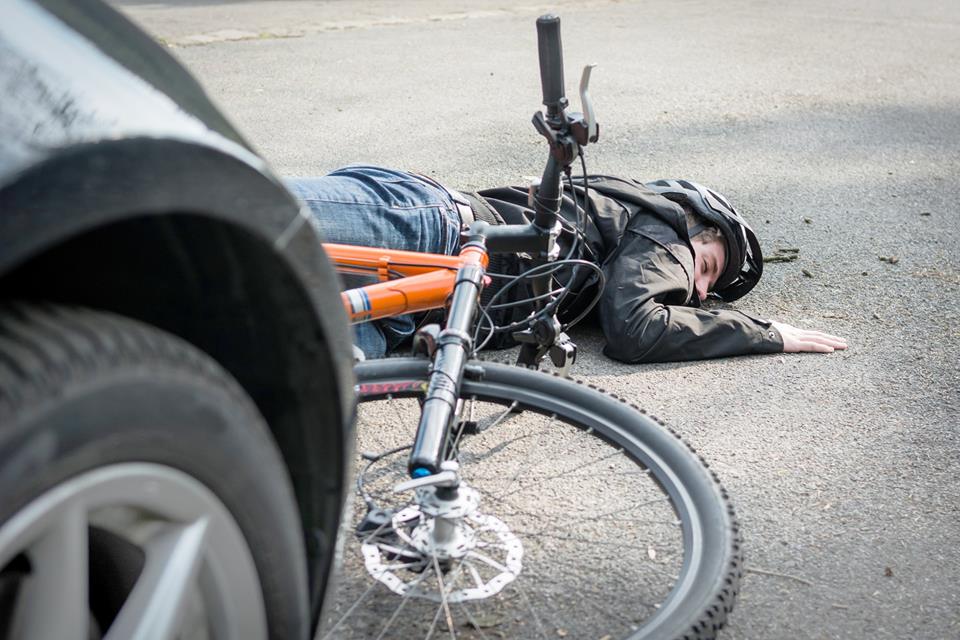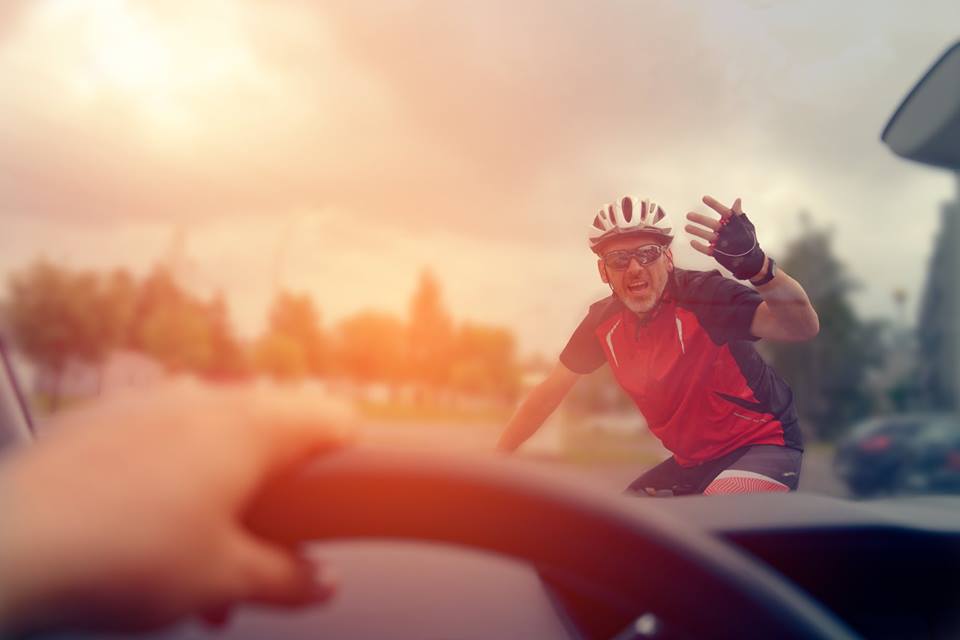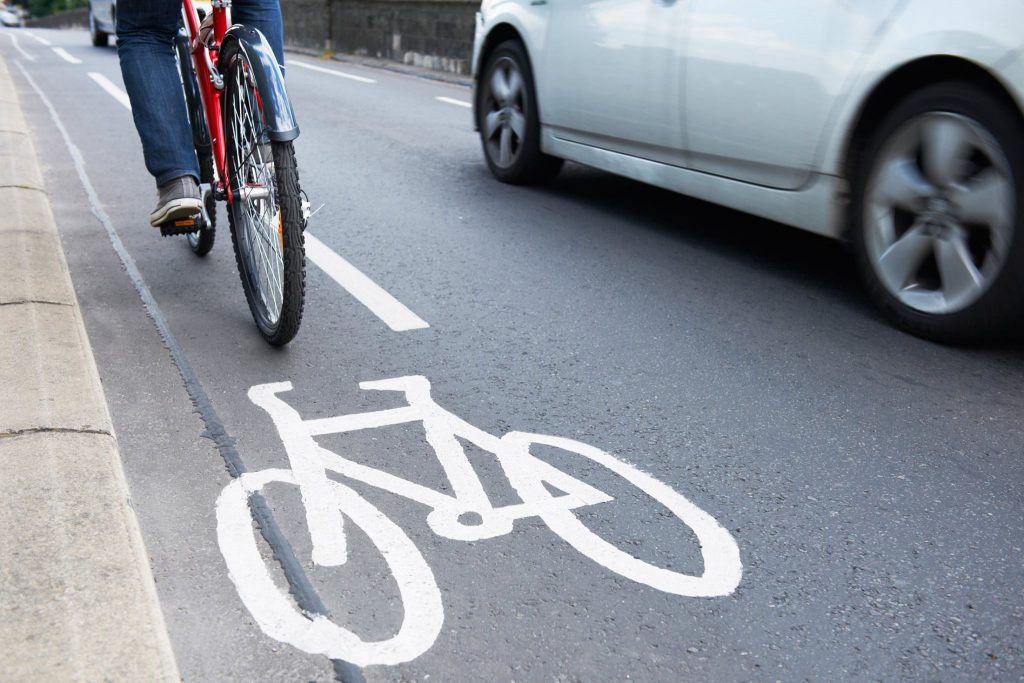
In a recent comprehensive survey conducted by Bike Chaser, 43% of the cyclists who responded stated that they felt unsafe cycling on the road in Australia. That figure jumped to an astonishing 49% in New South Wales.
Let’s just digest that for a moment. 43% of cyclists, whether riding for sport or recreation, fear going out for a spin!
Imagine if 43% of swimmers feared churning out laps at their local pool, or 43% of tennis players were too scared to venture onto their local courts? It’s a ridiculous notion, and yet, that unsettling feeling of doom is faced by cyclists on a daily basis.
So what are the reasons for this fear? (official survey results below)

It is not surprising that of those who responded negatively to the survey, a massive 85% of them stated that they most feared aggressive drivers.
75% indicated that they also feared inattentive drivers. Third on the list, at 55%, was lack of access to cycling infrastructure.
That the top two positions on this ‘fear scale’ relate to driver behaviour is a national shame. It is not a perceived fear either. You only have to read the daily news or visit the trauma department of your local hospital to see the reality of the car versus cyclist debate. It’s an argument that the car always wins.
According to a study conducted by The Conversation web page, cyclists are suffering more serious injuries in road crashes than ever before. The results of the study (published in the Medical Journal of Australia and covering a nine year period between 2007 – 2015) show that the incidence of hospitalisation of cyclists for road traffic related major trauma is increasing by 8% per year.
Recent Australian road fatality statistics show that 25 cyclists died on our roads in the 12 month period to June 2017. This jumped alarmingly to 45 deaths for the 12 month period to June 2018.
This is despite the Australian Bicycle Council’s National Cycling Participation Survey indicating that, while bicycle ownership in this country has remained relatively steady since 2011, cycling participation during this time has significantly declined.
So, if there are actually less cyclists on the road now than there were seven years ago, how can it be that serious incidents between bikes and motor vehicles are still on the increase?
To answer that question we need to look at:
What causes the accidents in the first place?
Recent studies conducted by the University of Adelaide and the Royal Automobile Association of South Australia found that motorists were overwhelmingly responsible for accidents involving cyclists.
In 70% of the cases examined by the RAASA, the cyclist was not at fault, while the university study, which used police crash records as its report basis, found drivers caused four in every five (80%) crashes between cars and bicycles, with an astonishing 87% of drivers being responsible for the actions preceding each incidents.
Some of these incidents would have been genuine accidents, examples of being in the wrong place at the wrong time.
Others would have been caused by visibility issues. Things start to get serious though when we talk about driver inattentiveness or those driving while under the influence of drugs or alcohol. Add aggressive drivers to the list and the lethal mix is complete.
Of course, these drivers are also a menace to every other road user as well, not just the cyclist, and the crashes they cause can be catastrophic for all involved.
Unfortunately for the cyclist though, there is next to no chance of avoiding injury or even death if he or she is struck by a vehicle. Lycra offers little protection against a speeding piece of automotive machinery.
While these drivers may not set out with the intention of terrorising or harming cyclists, their selfish and reckless actions can have devastating effect.

This hit my cycling community hard back in March 2016, when local cyclist Christian Ashby, a father of two and a talented triathlete, was mown down by a drug addled, disqualified driver who left him lying on the road to die.
Mr. Ashby suffered horrific injuries and was lucky to survive. His life will never be the same and he will never be the active member of the sports community that he once was.
The most dangerous drivers are the ones who intentionally go out of their way to antagonise and even hurt our most vulnerable road users. This aggression is disturbing. But where does it come from? Is it pent up frustration? Is it an inability to feel empathy for other road users?
The Quora website defines road rage as aggressive driving that arises from disagreements with other drivers or drivers who lose their temper after a traffic incident.
So, when did it become normal to be angered by being held up for a few seconds behind a cyclist? Have we become so short on tolerance that something as inoffensive as riding a bicycle is enough to make us see red?
Perhaps it really is the age of entitlement.
The attitude that ‘this is our road and everyone else has to get out of the way’ is alive and well in our towns and suburbs. And yet there must be more to it than that.
Drivers, especially those in the larger cities, sit in traffic snarls, sometimes for hours. They don’t like it, but it is accepted as a part of the daily commute.
So why the red haze when they have to wait 10 seconds before it is safe to pass a cyclist?
David Beck, in an article published in the Brisbane Times back in 2016, looks at the situation from a psychological perspective. He believes that motorists (being the dominant road user group) are conditioned to worry about other motorists and often do not see or react to cyclists. This leads to encounters with cyclists being a deviation to what the motorist normally expects.
This effect means that the driver, in any negative incident with a cyclist, is more likely to believe it is the fault of the rider for being where he ‘shouldn’t’ be, rather than being due to the driver’s own actions.
Beck goes on to link this attitude with a phenomenon known as ‘availability bias.’ Because a run in with a cyclist is more unusual, it becomes more memorable. This then leads to ‘error group attribution’ where wrong doing by one cyclist is deemed as representative of the entire group.
From there it is only one short step to anger and rage.
How do we short circuit this snowballing cycle of rage?
Monash University psychology lecturer Lauren Shaw states that road rage offenders justify their behaviour because they believe they are punishing other road users for their mistakes. It is the classic case of victim blaming and exhibits an inability to control or take responsibility for one’s own actions.
Unfortunately this inability to accept responsibility spills over into non-road rage accidents as well. Rebekah Stewart, the callous individual who left Christian Ashby lying on the road with organ failure, broken bones, punctured lungs, a shattered pelvis, a ruptured kidney and catastrophic bleeding, recently appealed her 6 year jail sentence, believing it to be too harsh because Mr. Ashby did not actually die!
Mr. Ashby might not have died, but he did spend a fortnight in an induced coma, 108 days in three different hospitals, countless hours of painful and ongoing rehabilitation and a drop in weight to just 58 kilograms.
He has gone through at least 12 operations, with more to come, to repair damage to his kidneys, leg, his hand (which is now permanently deformed), and his hip. He will never run or jog again, is in constant pain and has permanent scarring.
Did I mention that he was a father of two, and, before the accident, a talented triathlete?
Mr. Ashby’s list of injuries makes for uncomfortable reading. His story is horrific. But these are the stories that have to be shared. They just have to be.
The general public and the motoring fraternity in particular, must be made to see what happens to a person’s body when it is struck by a vehicle.
We have to reverse the dehumanisation that is brought on by ‘error group attribution’. We have to give the riders a ‘face’.
Your local group ride is not made up of a generic collection of men and women, they are real people with friends and family. They are fathers and mothers, sons and daughters, sisters and brothers, husbands and wives, teachers, doctors, shop assistants, council workers, landscape gardeners and more. They are you and me.
Road safety advertisements have played on this for years, taking away the anonymity of the accident victim and presenting them as real people, so why can’t similar campaigns do the same for cycling?
We know that with time and effort change can be brought about. The evidence is right there, reflected in the decreasing number of overall deaths on our roads.
Australia’s road toll has dropped remarkably over the past few decades despite the numbers of vehicles on the road sky rocketing. In 1970 there were 3,798 road fatalities. Last year there were 1,225, a drop of over 2,500 deaths.
Better infrastructure, safer cars, seat belt laws and improved driver education programs, coupled with hard hitting and graphic nation wide media campaigns have all contributed to the improved outcomes.

So why can’t the same be done with cycling?
A prolonged awareness and media campaign, coupled with driver education, common sense laws and improved infrastructure can improve cyclist safety. We know media campaigns work. The ‘Keep Australia Beautiful’, ‘Life, be in it’ and ‘Slip, Slop, Slap’ media offensives of the 1970s and 80s had significant influence over the lifestyle of a generation of Aussies.
Organisations like the Amy Gillett Foundation work tirelessly on behalf of cyclists around the country, but they can’t do it alone.
Their ‘metre matters‘ campaign was the result of research that showed being hit from behind was the crash type that resulted in the highest number of cycling fatalities. Their recommendation of a minimum passing distance has become law in some states, is being trialled in others, but strangely (or perhaps not) is only being used as a vague guideline in Victoria.
It is so frustrating. The data is there.
The research is in. The statistics overwhelmingly show that cyclists are dying because of the actions of motorists.
And yet government reaction is like treacle. Imagine if 43% of motorists were too scared to drive their cars? Imagine if 45 drivers were killed by cyclists last year? Would there be action then? You’d better believe it.
Change for cyclists will come, it’s just going to take time. It took 40 years to get the road toll below 1,500 deaths per year, and it will take generational change before we see a dramatic reduction in cycling’s trauma statistics. But that doesn’t mean we don’t act now.
Everyone of us can play a part.
If the government won’t educate the general public then it is up to us to take up the slack.
We can do this, but not by rowdy protest or by disrupting daily routines of everyday people to gain exposure. Let’s face it, aggressive protesters often do more harm than good to their causes and the last thing cyclists need is to get more motorists offside. No. We need to be smarter than that. We need to ‘humanise’ the cycling community.
We can do this by sharing our cycling stories.
We can talk to our colleagues and friends about our experiences. We can tell them about the Christian Ashbys of the cycling world (unfortunately every town has one) and the struggles they face. And we mustn’t spare any of the gory details.
Empathy will follow if motorists begin to see cyclists as people so let’s post our cycling selfies and videos on social media and hastag them with ‘I am….‘ I am a father. I am a daughter. I am a friend. Whichever suits.
Let’s flood Facebook with our images. Let’s inundate Instagram. Let’s takeover Twitter. Let’s start an avalanche and give cyclists a face! In the absence of a national media campaign promoting cycling safety, it is up to us to try and get the ball rolling.
Why not try this – get kitted out in your bike gear, grab your phone, and make a short video following this script – “Hi, I’m a cyclist. I am also a father/mother/son/daughter (etc). Please drive safely when you see me on the road because my life is in your hands.”
If you do post a video be sure to tag Bike Chaser, and be creative! I’ve also set up an instagram account (@mylifeyourhands) so feel free to tag that also and we’ll share what comes in.
It matters not to a rider if they are hit by an inattentive driver or an aggressive one, the results are just as catastrophic, and the simple fact is, behaviour on our roads must change. It starts with us, and hopefully people in higher places will follow.
Tolerance is the key. Tolerance and empathy. It shouldn’t matter if your vehicle has a motor or not, we need to be looking out for each other, caring for each other, supporting each other. Whether there is cycling infrastructure throughout our towns and cities or not, share the roads and share them willingly.
Every cyclist who gets home safely will thank you for it.
#iamafather
#mylifeyourhands





I’m a recreational cyclist on the Mornington Peninsula and have been riding conistently for the last 8 years. Aggressive drivers are on the increase here, particularly on weekends when many people from Melbourne flood into town. Maybe they feel anonymous down here, but their behaviour is intimidating and dangerous. I always ride in company as I do not feel safe on my own. The bike infrastructure for road cyclists is poor, disconnected and ignores cyclists who want to ride east west, while there are wide nature strips everywhere that could easily accommodate bike lanes. My commute to work is 15km, however, sadly I don’t ride as I believe it is too dangerous.
I hear you Gayle. I almost gave up road cycling altogether this year and I have friends who actually have. Tolerance and empathy between riders and drivers is the key but I honestly don’t know how that is going to be acheieved. You know, I reckon 99 percent of drivers are really respectful of cyclists, but it is just that one in every hundred that causes problems. Trouble is, it only takes one accident to end a life.
I solved this by leaving Australia behind.
Ha, not a bad solution!
As both a driver and a cyclist, I am surprised that there is little talk about cyclists taking more responsibility for their own visibility and thus safety by wearing fluro jackets and white or yellow helmets. The fashion for far too many are dark low visibility clothing and black helmets. Just check out: https://cyclingtips.com/2016/06/does-reflective-and-fluorescent-clothing-make-us-safer/ which very much highlights that one can easily reduce the risk of accidents
I totally agree Graeme. We, as cyclists, should be doing everything we can to protect ourselves and being readily visible is a relatively easy way to increase our safety. Reflective gear and decent lighting is a must. We can only do so much though. Our lives are still in the hands of the motorists surrounding us.
I understand the appeal of suggesting that cyclist wear hi-vis or Fluro gear. But this again puts the onus on the ‘potential ‘ victim (victim blaming) & not on drivers heightening their attention & awareness.
And I think every one of us probably has anecdotal stories of friends/acquaintences who have been hit despite wearing hi-vis.
You make a valid point Jane, and yes we all have stories of people wearing high-vis gear still being hit. What we don’t have though is data showing how many accidents have been avoided because of increased visibility. While it is impossible to quantify I would argue that if even one accident is avoided because of increased visibilty, then wearing brightly coloured, easily seen gear is definitely worth the effort. It might not save you from an aggressive driver, but it might jolt the senses of an inattentive one. We can’t just rely on other road users doing the right thing, we need to take some responsibility for our own safety as well. To me, that means obeying the road rules, riding responsibly, and doing anything else in my power to make sure that motorists can see me.
I agree with the comments about being visible however for the drivers deliberatly targeting cyclists this only makes things easy for organising the punishment pass ,high speed dooring and throwing of bottles and cans .The mean spirited attitudes common in the comunity are reflected in driver behavior hence the quote “I,ll give them room when they pay rego”sadly for many who would cycle the risks are too great